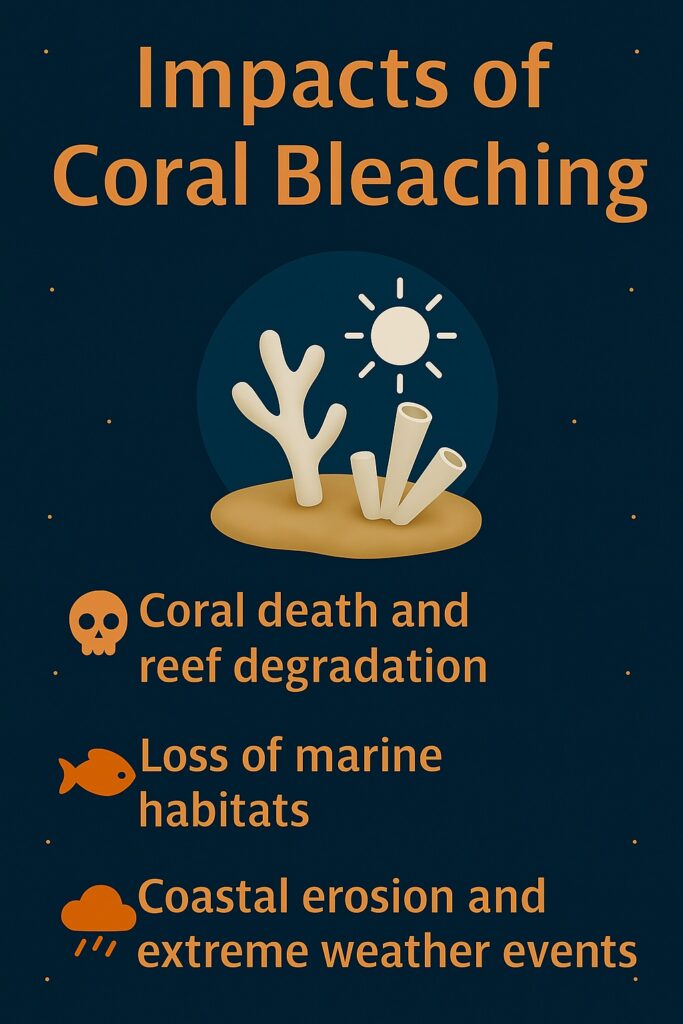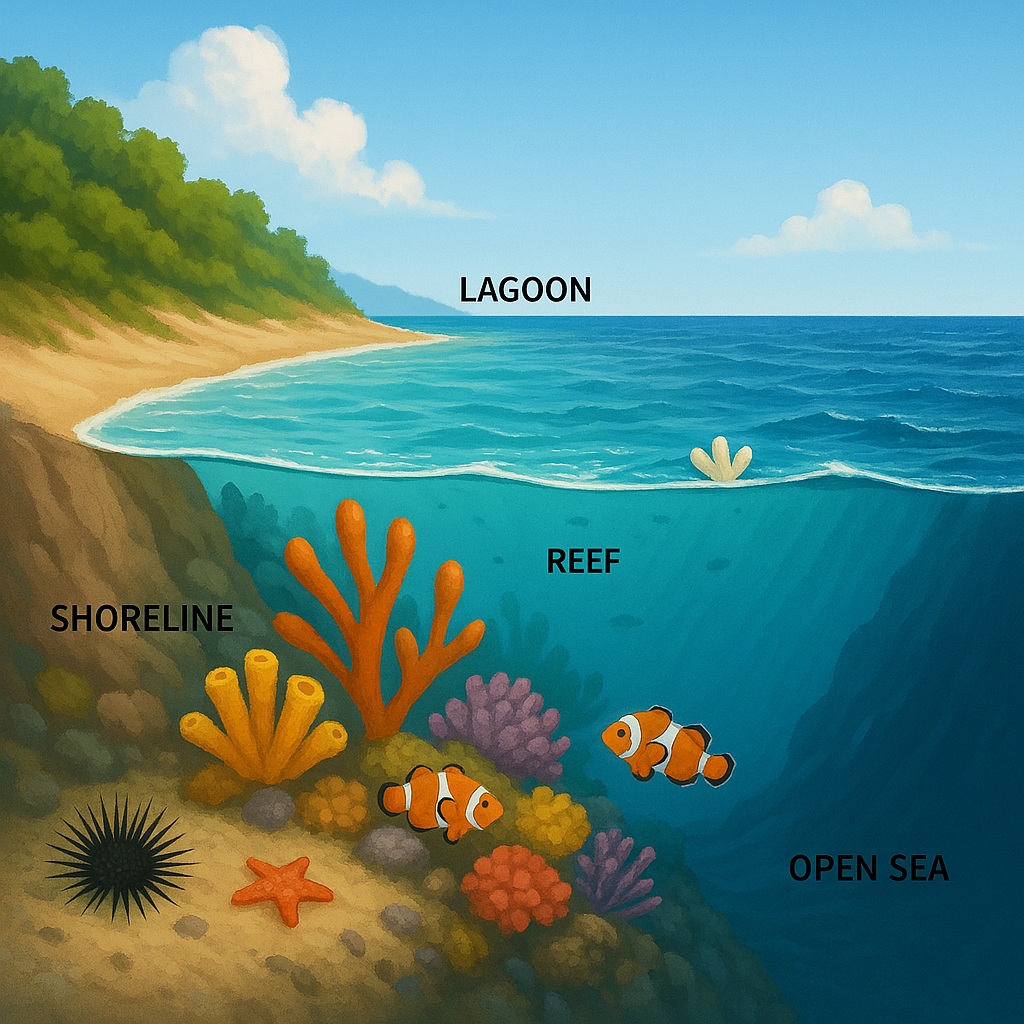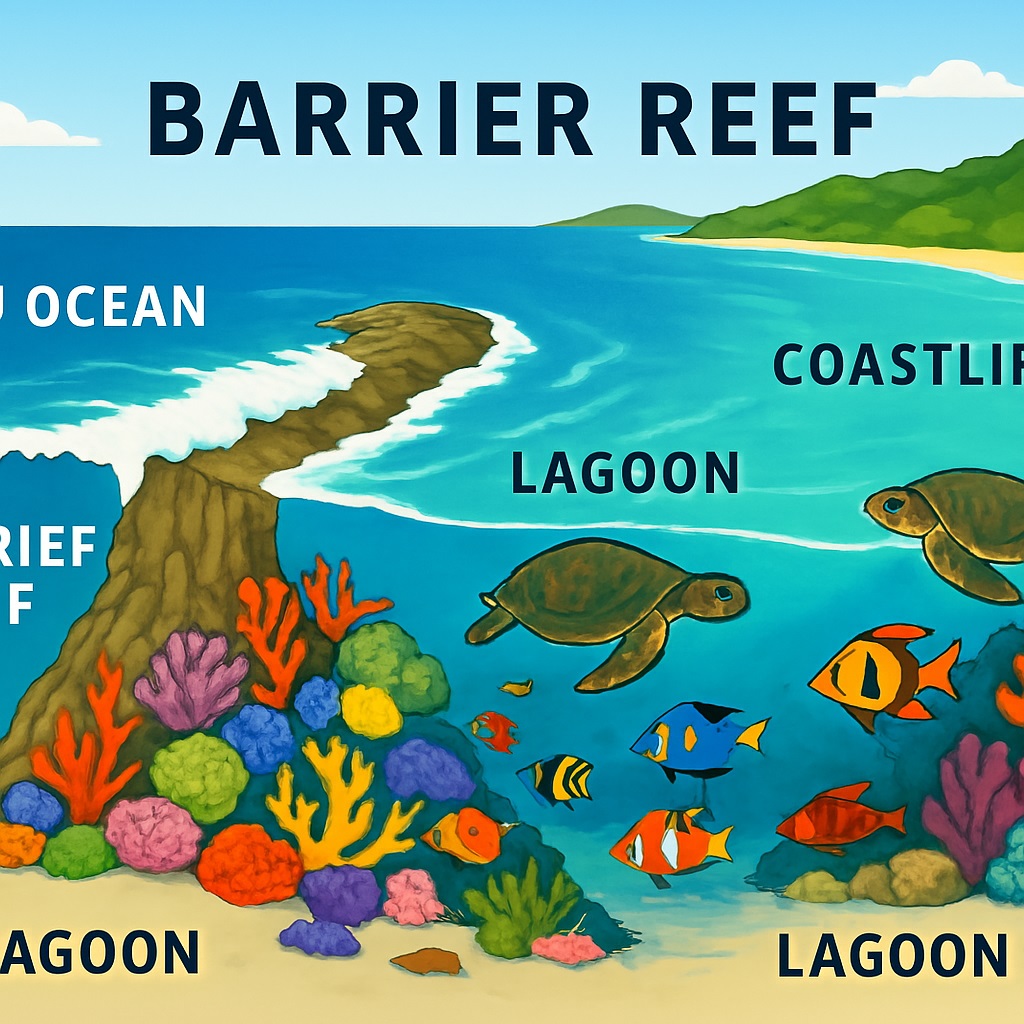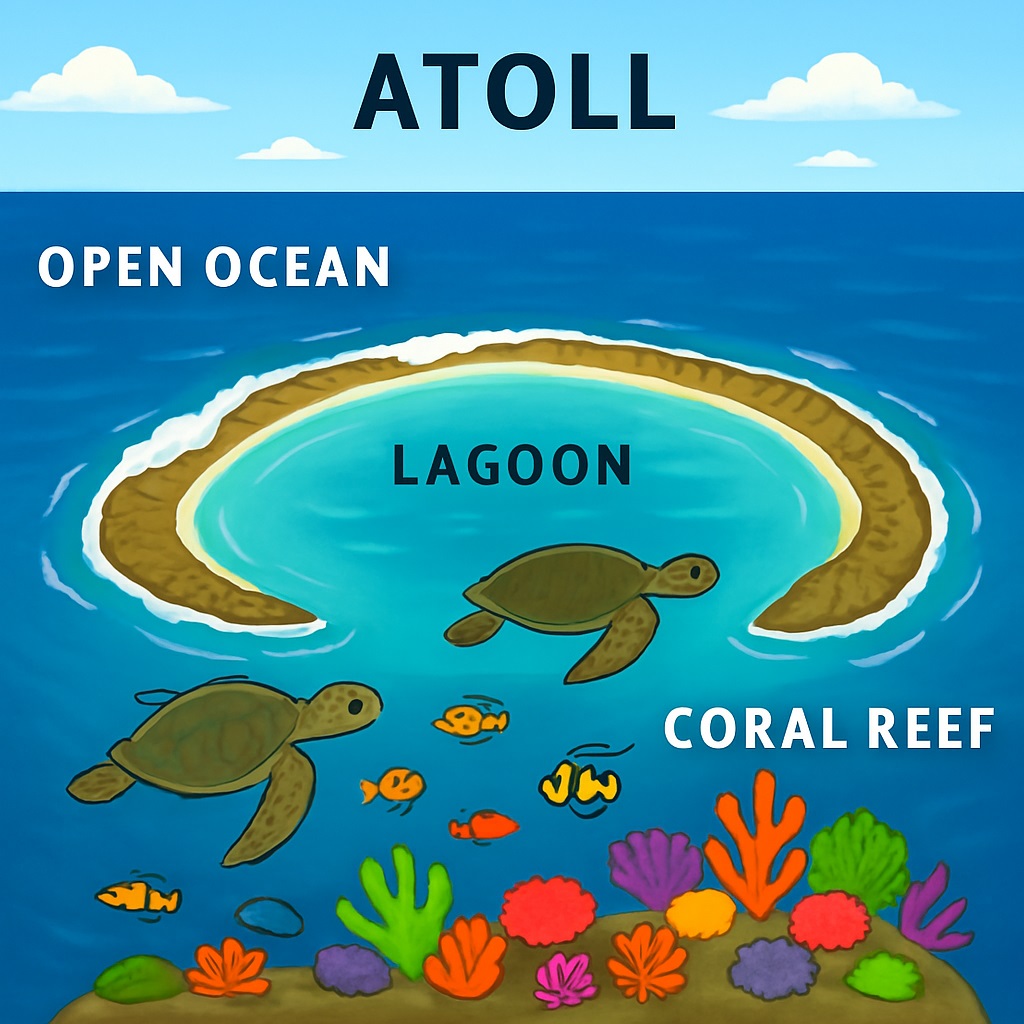Coral reefs are among the most biologically diverse ecosystems on the planet, providing habitat for thousands of species of plants and animals. They also play a crucial role in maintaining the health of the world’s oceans, serving as important nurseries for young fish and other marine species, protecting coastlines from storms and erosion, and providing valuable resources for human populations.

However, these ecosystems face significant threats, one of the most severe being coral bleaching, a phenomenon driven by environmental stress. Coral reefs are facing a growing number of threats, including overfishing, pollution, and the impacts of climate change, including coral bleaching. Coral bleaching is a process in which corals expel the symbiotic algae that live within their tissues, causing the corals to turn white and increasing their risk of death.
Table of Contents
Causes of Coral Bleaching

Coral bleaching can be caused by a variety of factors, like:
- Increased water temperature: The most significant cause of coral bleaching is an increase in water temperature, which can cause the corals to become stressed and expel their symbiotic algae.
- Changes in water quality: Changes in water quality, including increased pollution or changes in the levels of salinity or nutrients, can also cause coral bleaching.
- Changes in light conditions: Changes in light conditions, such as increased exposure to sunlight, can also contribute to coral bleaching.
- Changes in ocean acidification: Ocean acidification, caused by increased levels of carbon dioxide in the atmosphere, can also contribute to coral bleaching by affecting the ability of the corals to produce and maintain their skeletons.
Impacts of Coral Bleaching on Coral Reefs

Coral bleaching can have serious and long-lasting impacts on coral reefs and the ecosystems they support:
- Loss of habitat: Coral bleaching can cause significant loss of habitat for the thousands of species that depend on coral reefs for survival, including fish, crustaceans, and other marine life.
- Decreased biodiversity: The loss of coral reefs can also result in a decrease in biodiversity, as the loss of one species can have a ripple effect on the entire ecosystem.
- Increased risk of disease: Coral bleaching can also increase the risk of disease among corals, as the loss of their symbiotic algae leaves them more vulnerable to infection.
- Economic impacts: Coral reefs provide a range of important economic benefits, including tourism, fisheries, and coastal protection. The loss of coral reefs due to bleaching can have significant economic impacts, particularly in coastal communities that rely on these resources.
Preventing and Mitigating Coral Bleaching
To prevent and mitigate the impacts of coral bleaching on coral reefs, it is important to take a multi-faceted approach:
- Reducing greenhouse gas emissions: One of the most effective ways to prevent coral bleaching is to reduce greenhouse gas emissions, which contribute to global warming and ocean acidification.
- Protecting and restoring coral reefs: Protecting and restoring damaged coral reefs can help to mitigate the impacts of coral bleaching and support the recovery of these critical ecosystems.
- Implementing sustainable fishing practices: Overfishing can also contribute to coral bleaching and the degradation of coral reefs, so it is important to implement sustainable fishing practices that minimize the impact on these ecosystems.
- Reducing water pollution: Reducing water pollution and improving water quality can also help to prevent coral bleaching and support the health of coral reefs.
- Supporting research and monitoring: To better understand the causes and impacts of coral bleaching, it is important to support research and monitoring programs that can inform effective management and conservation strategies.
- Promoting education and awareness: Raising awareness about the importance of coral reefs and the threats they face can help to mobilize support for their conservation and promote more sustainable practices in communities that rely on these ecosystems.
Types of Coral Reefs
There are three main types of coral reefs found in India, each with its own unique characteristics and ecological significance.
Fringing reefs
Fringing reefs are the most common type of coral reef found in India, and are located close to the shoreline, often in shallow water. They are characterized by a narrow band of coral that runs parallel to the coastline and is separated from the shore by a shallow lagoon.
Fringing reefs are important habitats for a range of marine species, including fish, crustaceans, and mollusks. They are found in many locations along the Indian coast, including the Andaman and Nicobar Islands, Lakshadweep Islands, and the Gulf of Mannar.

Barrier reefs
Barrier reefs are larger and more complex than fringing reefs, and are located further offshore. They are separated from the shore by a deep lagoon, and can be several kilometers wide. Barrier reefs are important for protecting coastlines from storms and erosion, and provide habitat for a wide range of marine species. In India, barrier reefs are found in the Andaman and Nicobar Islands.

Atolls
Atolls are circular or semi-circular coral reefs that surround a central lagoon. They are formed from the remnants of ancient volcanic islands that have sunk beneath the sea. Atolls are found in the Lakshadweep Islands and are among the most biodiverse and important coral reef ecosystems in India. They provide habitat for a range of marine species, including sharks, rays, and sea turtles.

In conclusion, coral reefs and coral bleaching are critical issues that require a comprehensive and global response. By working together to reduce greenhouse gas emissions, protect and restore damaged reefs, and promote sustainable practices, we can help to ensure the long-term health and survival of these important ecosystems and the species that depend on them.